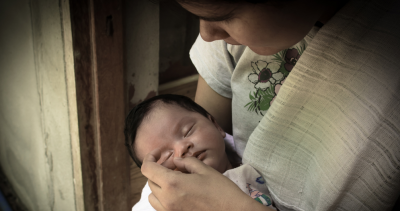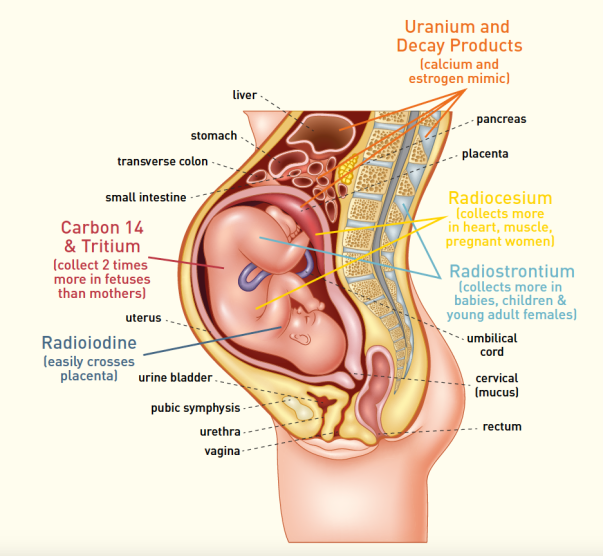Does Living Near a Nuclear Plant Give Children Cancer?

Note to readers: please click the share buttons above
More than 60 studies have shown increases of childhood leukemia around nuclear facilities worldwide. Despite this finding, there has never been independent analysis in the US examining connections between childhood cancer and nuclear facilities. The US Nuclear Regulatory Commission (NRC) had tasked the National Academy of Sciences (NAS) to conduct such a study, but then withdrew funding, claiming publicly that it would be too expensive.
In fact, documents obtained through the Freedom of Information Act (FOIA) process reveal that NRC employees had already determined the study would show no impact. Internal emails indicate that staff was presupposing a conclusion for which they had no evidence, demonstrated by statements like “even if you found something that looked like a relationship [between cancer and radiation], you wouldn’t know what to attribute it to,” and “[m]ost people realize that all the evidence shows you’re not going to find anything.” The evidence, however, had not yet been fully collected and examined.
Not protective and unaccountable
While the NRC claims it protects public health, its radiation exposure standards fail to account fully for:
- impacts on the placenta
- impacts on fetal blood forming cells
- impacts on fetal and embryonic organs
- estrogenic impacts
- disproportionate impacts on women
- genetic impacts past the second generation
- cumulative damage of repeated radiation exposure
NRC exposure data and modeling is designed to demonstrate compliance with the NRC’s regulations but not to assess health impacts. The NRC has already stated numerous times that it believes low doses of radiation, the kind NRC claims its licensees are allowed to release, pose risks so low that health impacts may not be discernible. We don’t know if NRC’s claims of no discernible or attributable public health impact from nuclear power are actually true since no one has ever looked properly.

Pregnancy and unborn children are the most vulnerable to serious damage from radiation exposure.
Studies in other countries show association between nuclear facilities and childhood cancer. However, given the demonstrable bias of the US NRC toward low doses having no health impact, it is essential that a US study go forward under the auspices of outside, independent experts, in order to examine what is happening in the US.
Ground-breaking study plans were threat to current health assumptions
Under the original and now canceled study, the NRC had tasked the NAS to use the most advanced methods in order to update the study the NRC currently uses to claim its reactors are safe. That study, published in 1990, had several shortcomings including the way the authors define and examine disease, assumptions about doses, location of cases, and who is examined.
The NAS was considering two study designs, one examining specifically children. This study type, dubbed by one expert as a case-control nested in a cohort, is very similar in basic design to studies conducted in France and Germany, which show increases in childhood leukemia around nuclear power facilities.
The NRC scuttled the NAS study in 2015, dubiously claiming it would have cost too much and taken too long. Upon examination, however, it is clear that the NAS study would have challengedthe fundamentals of the NRC’s health assessment regime.
To date, most radiation studies have routinely suffered from a host of improper methodologies, making it impossible to discern health impacts. The NAS was considering using new ways of examining the issue by implementing a more detailed, more thorough, publicly shared research protocol. The protocol included:
- Making the study process and underlying assumptions public while the study was being conducted
- Allowing public comment during the study process
- Standardizing raw health data and making it available to researchers and the public
- Standardizing and verifying pollutant data
- Integrating independently collected pollutant and meteorological data
- Examining and redoing the current health models
- Tailoring health studies to local conditions
- Creating new health models, specifically for the radionuclide carbon 14, which concentrates in fetal tissue more than maternal tissue.
This detailed and accessible protocol could have opened the NRC’s regulatory regime to exhaustive scrutiny, revealing just how inadequate it is for examining health impacts in the first place, never mind protecting public health. Further, with such careful research, NRC could have feared that the NAS study would point to an association between environmental radiation and cancer, as other studies have, although FOIA documents consisting mostly of internal emails did not specifically demonstrate this fear.
Moribund study could be revived, made better
While the NAS child study design and protocol had much to recommend it, it is unclear whether it would have been free of all of the flaws that have historically plagued radiation health assessments. At the point of study cancellation, independent experts still had concerns.
Historically, industry and radiation regulators have insisted that a causal link must be absolutely established between radiation and disease. For protection of the public, however, experts claim the standard should be a lower bar of association with disease. If this study moves forward under the NAS, it needs to relinquish concepts and methods that favor causation.
To date, researchers have started radiation health studies by presuming that there will be no impact because doses are too low — a contention that, in reality, remains scientifically unproven. Many studies reveal the opposite. Any new such research needs to ensure that the basis for health assessments is a focus on health outcomes, not dose models that are fraught with uncertainties.
While NRC licensees attempt to monitor environmental contamination, the NRC has never incorporated biological monitoring, which might prove useful after spike releases from various facility outages. There are several techniques that have been used in other health studies, which a revived cancer study could weave into any child or adult health assessment.
A truly independent and scientifically robust study would attempt to address these issues in addition to using the other enlightened protocols the NAS was considering. With the public process and protocol review suggested by the NAS for this now moribund study, perhaps these remaining shortcomings would finally have been addressed as well. The NRC made sure that did not happen. However, according to Ourania Kosti, NAS researcher coordinating the study, the NAS has left the door open to completing it.
“I think it is important to update the findings of the 1990 study using better methodologies and information,” Kosti said. “This is the reason the Academies agreed to carry out the update. The Academies remain willing to do the study, if asked to.”
*
Cindy Folkers is the radiation and health specialist at Beyond Nuclear.
All images in this article are from the author.

